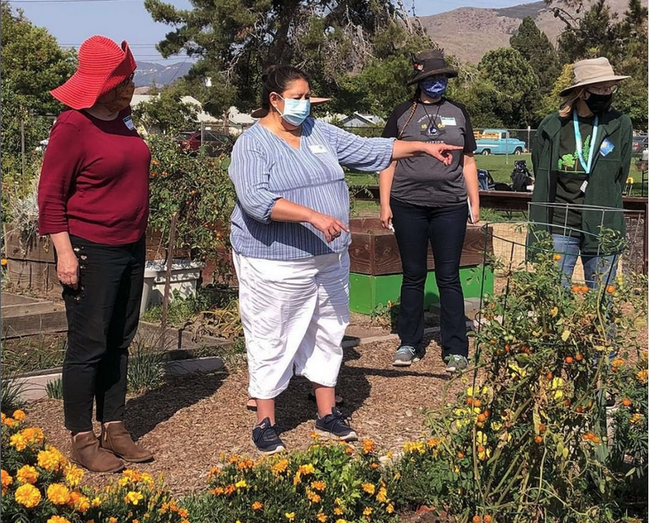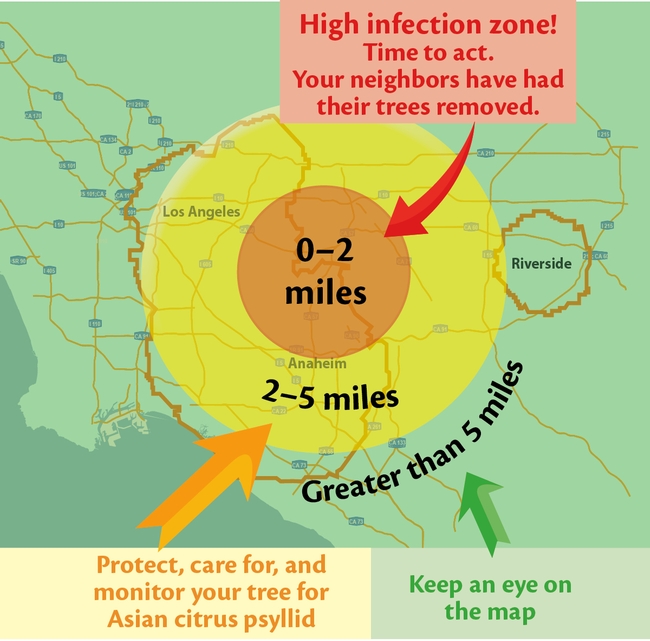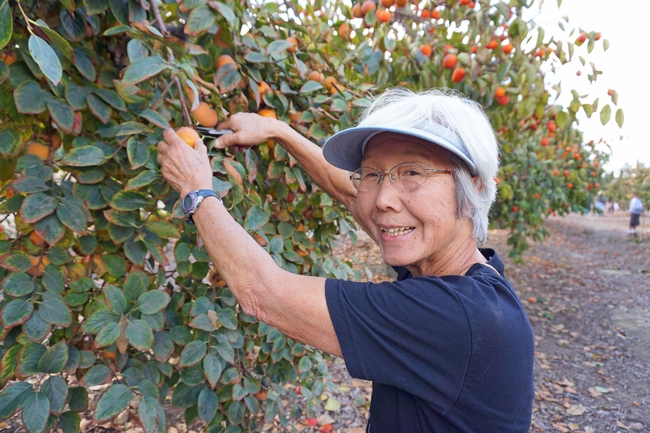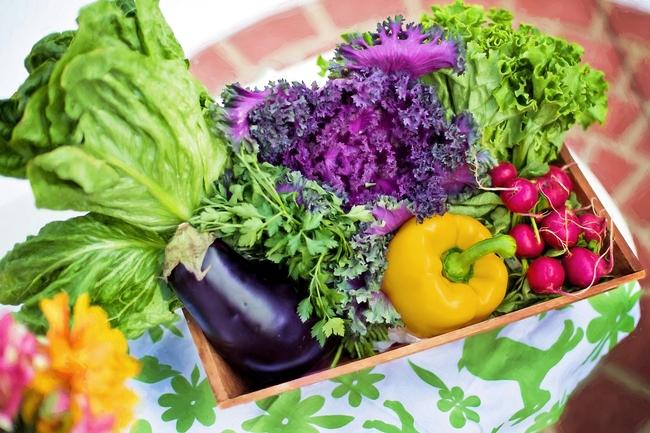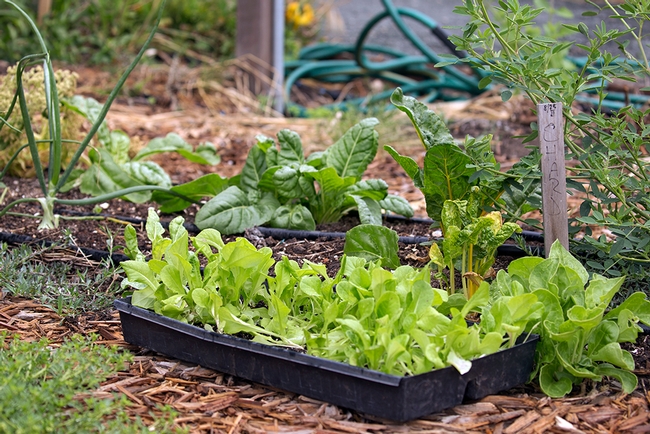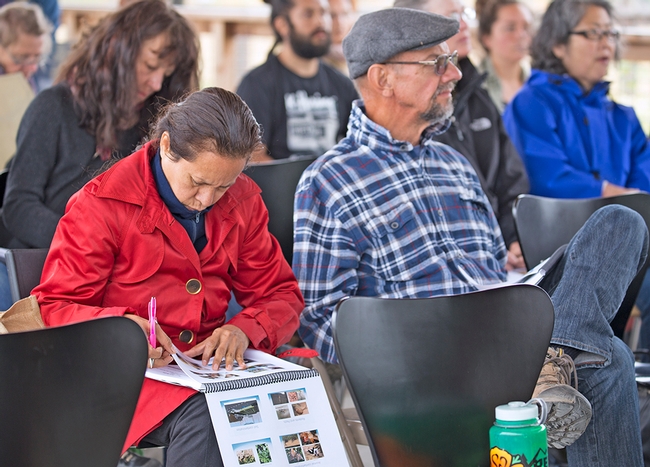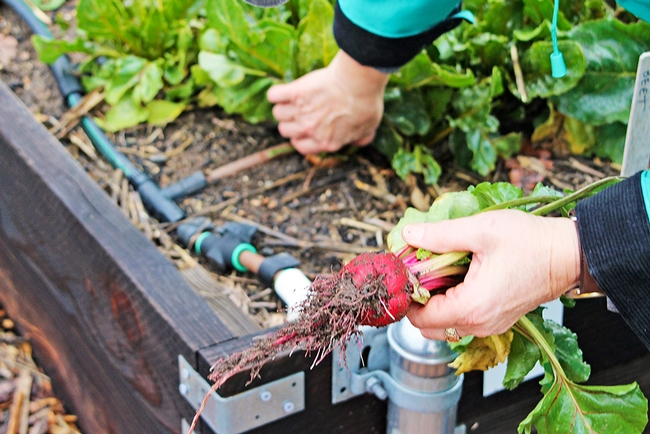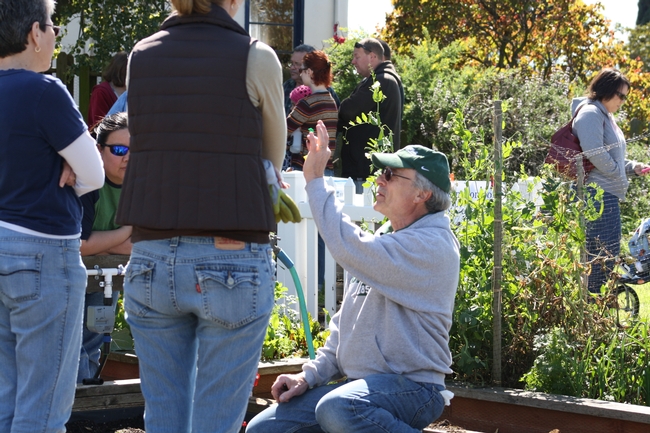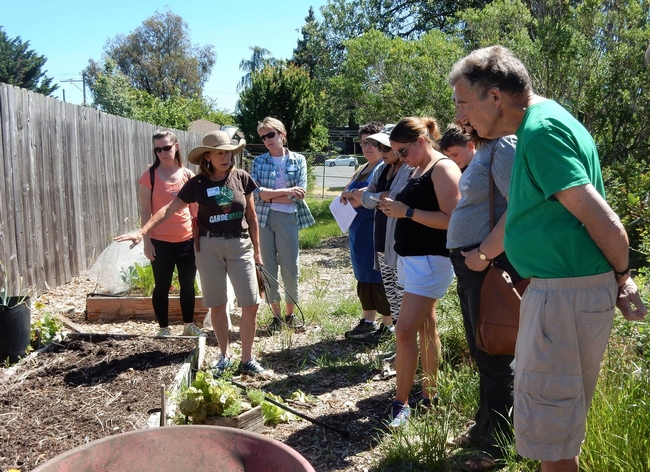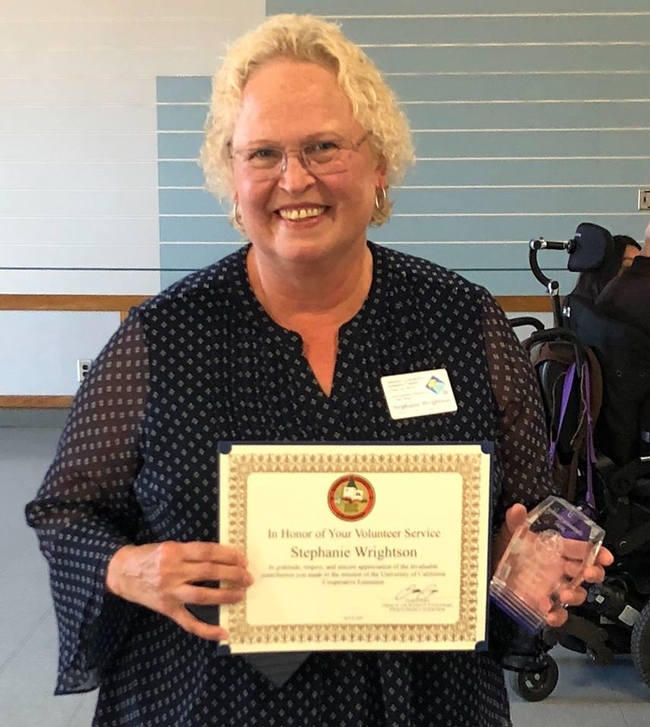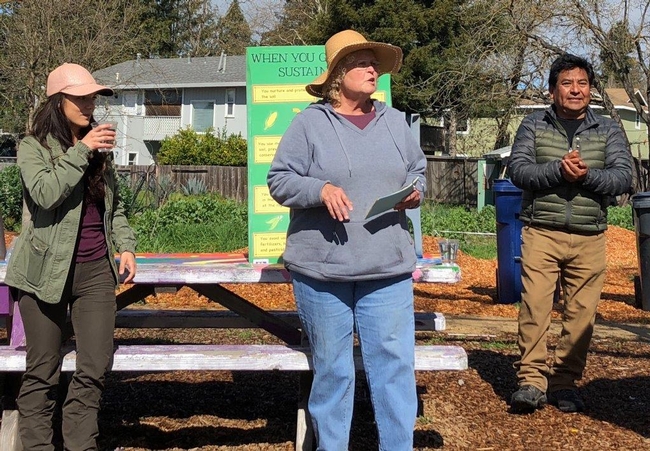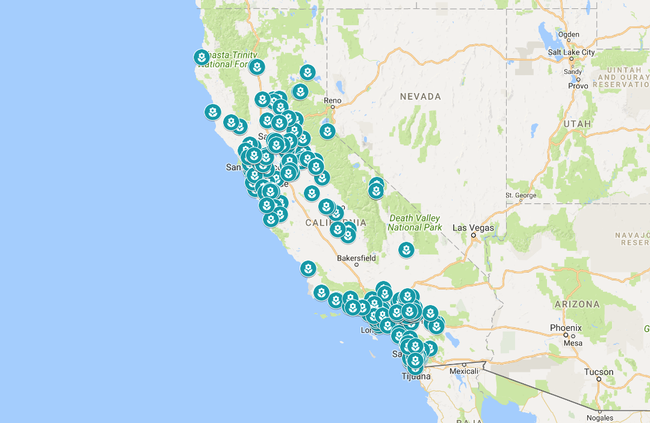Posts Tagged: gardening
For stress relief, food access, people turned to gardening during pandemic
More green spaces and urban farming opportunities could be helpful in future disasters
People who turned to gardening during the COVID-19 pandemic did so to relieve stress, connect with others and grow their own food in hopes of avoiding the virus, according to a survey conducted by researchers at the University of California, Davis, UC Agriculture and Natural Resources and international partners.
The survey report, “Gardening during COVID-19: experiences from gardeners around the world,” highlights the positive role gardening plays in mental and physical health, said Alessandro Ossola, an assistant professor of plant sciences.
“Connection to nature, relaxation and stress relief were by far the biggest reasons gardeners cited,” Ossola said.
The researchers sent links to online surveys via targeted emails to gardening groups, in newsletters and on social media between June and August 2020. They were hoping to gauge the significance of gardening as a way to cope with risk, how the pandemic changed gardening and what barriers existed.
More than 3,700 surveys were returned by gardeners from Australia, Germany and the United States.
Isolation, depression, anxiety reported
More than half of those responding said they felt isolated, anxious and depressed during the early days of the pandemic and 81% had concerns about food access. During this time, people also had more time to garden, and they saw the activity as a safe haven and a way to connect socially with others.
“Not only did gardeners describe a sense of control and security that came from food production, but they also expressed heightened experiences of joy, beauty and freedom in garden spaces,” said the report, which broke up responses by region or states.
In California, for instance, 33% of gardeners said their plots generated about 25% of their produce needs. Some gardeners with access to large spots to garden also grew food for their community.
Gardening offered a way to socialize safely during the pandemic
“People found new connections in the garden,” said Lucy Diekmann, a UC Cooperative Extension urban agriculture and food systems advisor who helped write the report. “It became a shared hobby as opposed to an individual one.”
Responses were fairly similar across all locations, even though the surveys hit in the summer and winter depending on location. “We see remarkable similarities in terms of what people are saying and the way they are interacting with their gardens,”Diekmann said.
More green opportunities needed
Many respondents also found it hard to find and buy seeds or plants and locate a spot to grow.
The report findings suggest an opportunity for government, community groups, businesses and others to promote community health by providing green spaces.
Gardening should be thought of as a public health need, one that could serve communities well in future pandemics or disasters. New Zealand, Canada and some countries in Europe write green prescriptions for people to garden to improve health.
“We need to change the narrative of how urban gardening is framed and elevate it to a key strategy for both environmental and public health,” Ossola said.
UC Davis graduate student Summer Cortez assisted with the research, as did Monika Egerer at the Technical University of Munich in Germany and experts from these Australian-based entities: Brenda Lin at Commonwealth Science and Industrial Research Organization, Jonathan Kingsley at Swinburne University of Technology and Pauline Marsh at University of Tasmania.
Planting alternative backyard fruit trees in Southern California can help stop citrus threat
Southern California's mild Mediterranean climate makes it ideal for growing fruit trees in backyards, community gardens and school gardens. The trees provide wholesome fruit along with shade, beauty and enrichment for families and communities.
“With fresh fruit close at hand, it's easier to follow dietary guidelines that encourage filling half our plates with fruits and vegetables for good health,” said Rachel Surls, UC Cooperative Extension sustainable food systems advisor. “Besides, gardening is a great activity. Tending fruit trees teaches natural science, responsibility and appreciation for fresh food. And a garden gets people outside and engaged in physical activity.”
Citrus trees are favorites for Southern California backyards, but Surls and her team aim to get local gardeners thinking beyond lemons, limes, oranges and other citrus fruit. In the past several years, a deadly plant disease has been spreading among Southern California citrus, prompting quarantines and putting citrus orchards across the state at risk.
Surls and her team are working on an initiative with a corps of volunteer UC Master Gardeners in Los Angeles and surrounding counties to promote selection and planting of appropriate fruit trees. New brochures, a website, workshops and one-on-one consultations will guide Southern Californians in making tree decisions that are scientifically sound and community-focused.
The project addresses serious concerns about the rapid spread of huanglongbing (HLB) disease, also known as citrus greening. The insect that spreads HLB – the Asian citrus psyllid – was introduced into California in 2008. The disease made its first California appearance in a Los Angeles County backyard in 2012. HLB, which eventually kills every tree it infects, is now spreading rapidly in urban areas of Los Angeles and Orange counties, where quarantines have been put in place by the California Department of Food and Agriculture (CDFA).
“Citrus trees are so popular in Southern California. They are part of our history and regional identity,” Surls said. “Now we have the unfortunate responsibility of telling residents about this serious problem we are facing. In some cases, residents who live near infected trees should be proactive and remove their lemon, orange, mandarin and lime trees and replace them with different kinds of fruit.”
New web app shows residents' proximity to HLB disease
University of California Agriculture and Natural Resources IGIS programmers, in collaboration with UC Cooperative Extension, have created an HLB Monitoring Web App that allows residents to enter an address to determine how close they are to confirmed HLB outbreaks. If they are within 2 miles of a residence where an HLB-infected citrus tree was found, the app recommends replacement of citrus trees with non-citrus fruit trees, such as apples, peaches, avocados or persimmons.
Residents with citrus trees that are 2 to 5 miles from areas with HLB should keep a close eye on their trees, treat for Asian citrus psyllid and begin thinking about planting an alternative to citrus if the disease spreads to their area.
“Huanglongbing poses a serious threat to both backyard and commercial citrus in California if its spread is not halted,” Surls said. “By removing trees in areas where HLB has been found, residents are helping reduce its ability to spread, buying time for scientists to find a cure.”
CDFA is testing trees throughout the state and removing HLB-infected trees. However, the first visible symptoms of HLB – yellow mottled leaves – can appear months to years after infection. Even if they look perfectly healthy, citrus trees can be harboring the disease and allowing it to be spread by the tiny psyllid insect.
Current hotspots shown on the HLB Monitoring Web App include Rosemead, Montebello, Pico Rivera, San Gabriel, Hacienda Heights and Cerritos in Los Angeles County. In Orange County, HLB is spreading in communities around Garden Grove, Westminster and Santa Ana.
“We know removing citrus trees is going to be really hard for people,” Surls said. “But if you live within two miles of an infected tree, your tree is probably already infected, and HLB means your tree is going to die.”
To ease the transition, UC Master Gardeners are informing residents about alternatives that will produce fruit that's nutritious and delicious.
“So many types of fruit trees can be grown in Southern California,” Surls said. “Honestly, we have almost unlimited options. We live in a fruit tree grower's paradise. So we want to encourage local residents to think seriously about selecting non-citrus trees to replace their citrus.”
The information can also inform residents who are planning a new backyard orchard.
“They should consider some of the many wonderful fruit trees we can grow here — plant a pomegranate, plant a peach, plant a persimmon — but resist the temptation to plant more lemons, oranges and other citrus trees,” Surls said.
Making the decision to plant a certain type of tree should not be taken lightly.
“Planting a fruit tree is a big commitment. It will be part of your garden for years. Research the best options for your family and locations,” Surls said. “The UC Master Gardeners are here to help.”
Following are good options to consider for replacing citrus trees in Southern California, although recommendations may vary based on local climate:
Apples
Certain apple varieties that do not need to be exposed to cold temperatures grow and produce well in Southern California. Low-chill varieties include Anna, Beverly Hills, Dorset Golden, Fuji and Gala.
Figs
Figs grow well in full sun in Southern California. They can reach 10 to 30 feet tall, and are best for spacious areas.
Jujube
Jujubes are less common in Southern California, but are a valued fruit in Southeast Asian and will grow well under Southern California conditions. They grow about 15 feet tall. Jujubes are a good selection for inland valleys that get hot during the summer. The fruit tastes like small, crispy apples. Dried, they are similar to dates.
Loquat
A small- to medium-size tree that grows 10 to 20 feet high, loquats are easy to grow and have relatively few pests. Fresh, ripe loquats are sweet and aromatic. They can be used in jams, sauces and garnishes.
Persimmon
Persimmons ripen in autumn after the leaves have fallen, creating a beautiful landscape display. They are easy to grow in full sun and part shade. Persimmons can be eaten fresh or dried for a date-like fruit.
Pomegranate
Well-suited to Southern California's Mediterranean climate, pomegranates grow to about 15 feet in height. Pomegranates are pest- and disease-resistant. The fruit's seeds, coated with astringent juicy flesh, are called arils. Use arils to top salads or other dishes, or squeeze for juice or to make jelly.
Other fruit tree options for Southern California include mangos, guavas, pineapple guavas, peaches, nectarines and pears.
For more research-based information about alternative fruit trees, visit the UC Agriculture and Natural Resources website “California Backyard Orchard” at http://homeorchard.ucanr.edu.
Contact your local UC Master Gardener Program for additional advice:
Los Angeles County – http://celosangeles.ucanr.edu/UC_Master_Gardener_Program
Orange County – http://mgorange.ucanr.edu
Riverside County – https://ucanr.edu/sites/RiversideMG
San Bernardino County – http://mgsb.ucanr.edu
Ventura County – https://ucanr.edu/sites/VCMG
Funding for the ‘Alternatives to Citrus Fruit in the Fight against Huanglongbing Disease' project was made possible by the U.S. Department of Agriculture's (USDA) Agricultural Marketing Service through grant AM180100XXXXG003. Its contents are solely the responsibility of the authors and do not necessarily represent the official views of the USDA.
Grow it: Gardening tips and resources
Gardening is fun…and it's an important activity. What we grow in school, home and community gardens can improve our health, and the health of our families and communities. What we grow can increase the resiliency of food systems in our communities. And what we grow, ultimately, can connect us more closely with the earth that sustains us. There are valuable lessons in gardening…too many to list here.
Even if you live in a small apartment, you can grow food. If you have a yard, you can grow quite a lot of food. View the transformation of a front yard in an urban area…from lawn to lush, productive food garden in only 60 days. You'll love the progression photos, and the simple explanation about how the garden came together.
Need more inspiration? Roger Doiron, founder of SeedMoney, talks about his (subversive) garden plot in this remarkable TedX talk. Roger created and led the social media campaign that called for a garden at the White House. This campaign ultimately led First Lady Michelle Obama to plant a vegetable garden at the White House. (And it may have also inspired the People's Garden at the USDA, which broke ground on Abraham Lincoln's birthday 10 years ago. Lincoln referred to the USDA as the “People's Department,” so it makes sense that the USDA would refer to its garden as the “People's Garden.”)
Need practical advice? The UC Master Gardener program has more than 5,000 certified volunteers ready to assist if you live in California. UC has also created a California Garden Web portal that provides a treasure trove of gardening resources for all parts of the state. It's not too early to begin planning your Fall garden, and you'll find information about that, too.
If you're interested in school gardens, read this brief history, written by UC ANR's UC Food Observer.
Happy gardening!
Tips to prepare, plant, and grow a fall vegetable garden
The transition of fall is upon us and gardeners are busy tending to late summer harvests, pruning back perennials, prepping for slower plant growth and more. But fall doesn't have to be all about wrapping up the growing season. In fact, life is sprouting and new garden plants are growing with the promise of fall, winter and early spring harvests.
Are you looking to join the cool-season gardening craze? The UC Master Gardener Program has engaging workshops to inform and inspire this fall. Bay Area residents can check out Growing Garlic and Onions in San Jose or Top 10 Vegetables for your Winter Garden in Campbell, both hosted by the UC Master Gardener Program of Santa Clara County. Another great resource is Saving the Harvest, a gardening and preserving guide and 2019 calendar created by the UC Master Gardener and UC Master Food Preserver Programs in Sacramento County. Check out the local offerings in your area at UC Master Gardener Program events.
Wherever you are in your gardening journey, here is a checklist of September activities for your garden:
Early September
- Maintain your warm-season garden with regular checks and harvesting. Prune new growth, flowers and any small or very immature fruits from tomatoes, eggplants and peppers. This practice encourages the plants to put energy into ripening fruit that has already set.
- Harvest and store seeds for next year's warm-season garden. To save and use seeds in the future, make sure you have a dry, cool location for seed storage. Don't forget to label and organize seeds to make preparation and planting easier in the spring.
- Remove and compost plants that have reached the natural end of lives or fruitfulness.
- Enjoy regular harvest of late-season-bearing cane berries like raspberries and blackberries. Check vines regularly for ripe fruit and pick before the birds steal away the fruit.
- Check and harvest edible landscape plants as well. Pineapple guava, Acca sellowiana, is a fantastic landscape shrub that has the added bonus of producing a tropical fruit. When pineapple guava fruit fall to the ground they are ripe, collect the fruits and wash, slice and eat the white fruit on the inside (like you would eat a kiwi).
Late September
By the end of the month it's time to start planting a cool-season garden. Try radishes and lettuces for harvest in late fall. They mature quickly and pair beautifully with roasted vegetables, cheese and nuts for a harvest-themed dinner salad. Broccoli and cauliflower are a great addition to your garden for winter harvest. Try roasting or making a creamy soup for a warm dinner on a cold night. Finally, onions and shallots are a must for your cool-season garden. They are slower to mature and will be ready for harvest in early spring to brighten your dishes and usher in a change in the seasons.
- Plant radishes, turnips, beets, onions and kale from seed.
- Pick up vegetable starts for broccoli, cauliflower, cabbage and lettuces at your local garden center.
- Keep soil moist while young plants send roots out into your garden bed.
- Provide shade to cool-season vegetables if needed to protect them from hot afternoon sun.
Connect with us
The UC Master Gardener volunteers are eager to help with all of your gardening needs. The UC Master Gardener Program can work with teachers and community volunteers to provide gardening information and consultation in the support of school gardens. With local programs based in more than 50 counties across California, there is sure to be a workshop or class near you. Visit our website to find your local UC Master Gardener Program, mg.ucanr.edu.
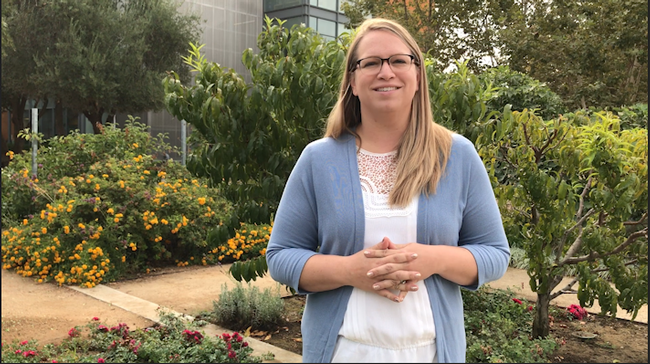
Missy Gable, Director of the UC Master Gardener Program shares tips for keeping a fall vegetable garden producing.
Growing gardeners and nourishing communities
Spring is here, and oftentimes the busiest season of the year for gardeners to plant edibles with dreams of ripe tomatoes and rows of juicy strawberries. But what about the “non” gardeners, you know the people who struggle to keep a cactus alive? Is there hope for a plentiful harvest for those self-identified terrible gardeners? Absolutely.
Food gardening takes some work, but if you have the determination and are willing to get your hands dirty, UC Master Gardener Program volunteers are eager to help you find success. Across almost every county in California there are passionate UC Master Gardener volunteers eager to turn your dreams of a bountiful summer harvest into a reality.
Sonoma County finds success with “Food Gardening Specialists”
The UC Master Gardener Program of Sonoma County has spent almost a decade perfecting the art of teaching best practices for food gardening. They have found a winning formula for food gardening workshops that focus on hands-on learning and interactive demonstrations in the garden. A group of UC Master Gardener volunteers with a passion for growing edible plants joined forces and started a project aptly named “Food Gardening Specialist.”
Food Gardening Specialists receive initial training in food gardening with curriculum developed by UC Agriculture & Natural Resources experts. After initial training, volunteers continue to grow their food gardening skills with monthly speakers, discussions groups and field trips. These highly skilled and trained volunteers teach food gardening at community or demonstrations gardens across Sonoma County, where anyone is welcome to attend.
Understanding the need to expand reach in Sonoma County, the project identified four key gardens to engage more diverse communities. Garden “captains” build relationships within these gardens, advising home gardeners and developing gardening workshops that are relevant to their community's needs. One of the core gardens provides year-round fresh produce to a number local food banks and programs that feed the hungry.
Stephanie Wrightson: Sonoma County Volunteer of the Year
A shining example of a dedicated Food Gardening Specialist is Stephanie Wrightson, who recently was awarded Sonoma County's Board of Supervisors “Volunteer of the Year” award. Wrightson has been a UC Master Gardener volunteer since 2010 and a member of the Food Gardening Specialist project since 2011.
Wrightson has donated more than 3,200 hours to the UC Master Gardener Program, most revolve around food gardening outreach.
“We put on public food gardening workshops, with Spanish translators, and demonstrate sustainable best practices in the garden ... invaluable. We interact, consult, advise. We learn from each other,” Wrightson said. “Food Gardening Specialists share science-based and sustainable food gardening information with garden visitors and workshop attendees. The gardens have quickly become a social hub in the neighborhood, bringing the community closer together.”
It is clear that Wrightson's role doesn't stop at the garden's gate. Wrightson was essential in shaping the vision of the Food Gardening Specialist project while serving on its steering committee and as a project leader. She manages efforts to keep all of the food gardening content updated, posted online or shared on its social media channels. Wrightson also works closely with the translation team to identify the most popular food gardening topics to make them available in Spanish.
“Stephanie brings such an attention to detail and focus on everything she engages in; we are so grateful to have such a talented UC Master Gardener as part of our organization,” said Mimi Enright, program manager for the UC Master Gardener Program of Sonoma County.
Where is food grown in your community?
Do you grow your own food or get homegrown food from a neighbor who gardens? Is there a community garden nearby, or a farmers market with locally grown fruits and vegetables?
“It's becoming more important to understand where our food comes from and to make sure everyone knows how to enjoy its benefits,” said Missy Gable, statewide director for the UC Master Gardener Program.
The UC Master Gardener Program provides the public with research-based information about food gardening, home horticulture, sustainable landscapes, and pest management practices. It is administered locally by UC Cooperative Extension offices that are the principal outreach and public service arms of UC Agriculture and Natural Resources. If you are interested in learning more about food gardening or would like to connect with your local UC Master Gardener Program visit, mg.ucanr.edu.
Trusted UC Food Gardening Resources:
- Vegetable Gardening Basics (UC ANR Publications 8059)
- Food Safety in your Home Vegetable Garden (UC ANR Publication 8366)
- Growing Tomatoes in the Home Garden ( UC ANR Publications 8159)
- California Garden Web (UC Master Gardener Program)
- The California Backyard Orchard (UC Master Gardener Program)
- Food Gardening (UC Master Gardener Program of Sonoma County)
- Food Gardening with Less Water Resources (UC Master Gardener Program of Sonoma County)



